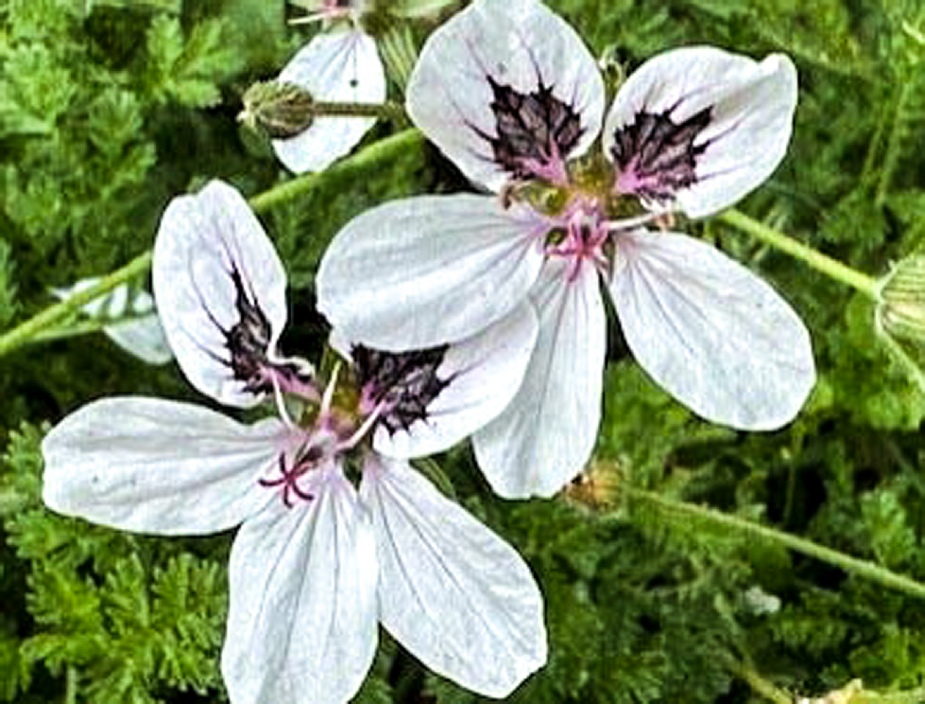Erodium cheilanthifolium Boiss.
Clade II; Subclade 4; Section Foetida; glandulosum series.
Perennial with a long tap root, subcaulescent; 3-25cm; plant forms large cushions.
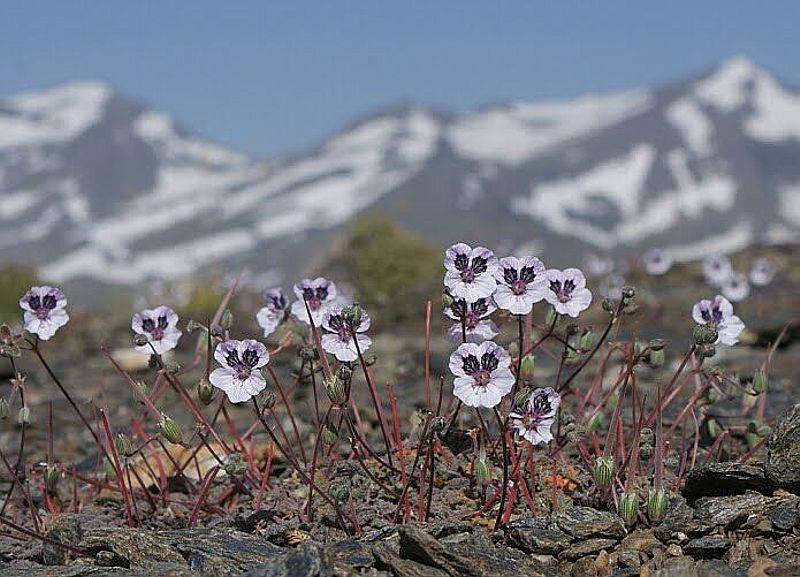
Inflorescence: umbels of 2-5 flowers directly from the base; flowers noticeably irregular; bracts 4-6, 2.8-6.9 mm, greenish white, narrowly membranaceous; sepals 4.5-7 mm; mucro 0.6-0.9 mm; petals 7-12.2 mm, unequal, of one colour, white, sometimes with a slight pink or lilac hue, with almost black veins, the superior 2 petals strongly blotched with dark purple, covering ½ or more of the petal, overlapping, lower 3 narrower, not overlapping and unmarked; nectaries olive-green, spherical and unequal, taller than wide; staminodes glabrous, pink, stamen filaments glabrous, pink; anthers pink or purple, pollen rose-coral; stigmas whitish-pink to purple. Flowers from (February-) April - September (-December).
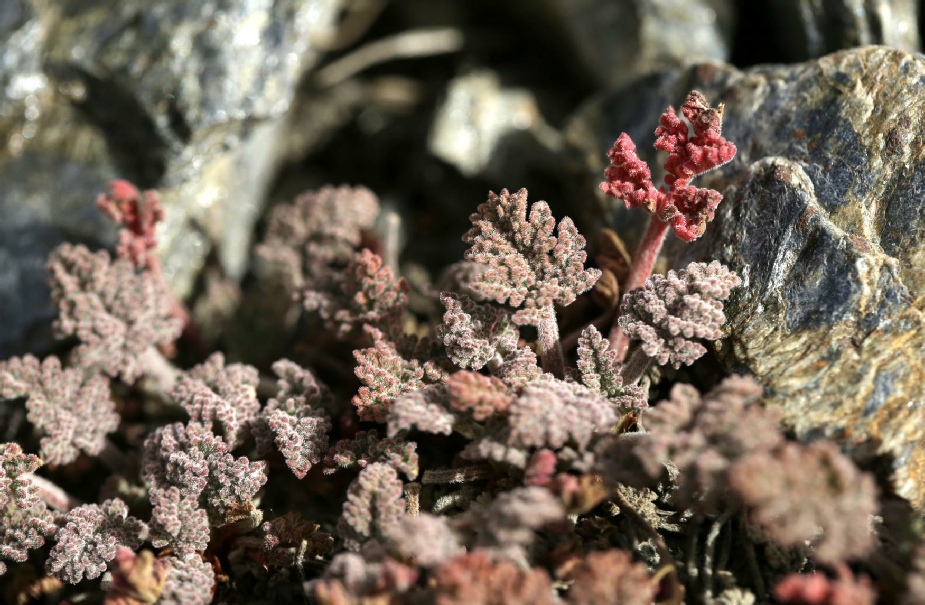
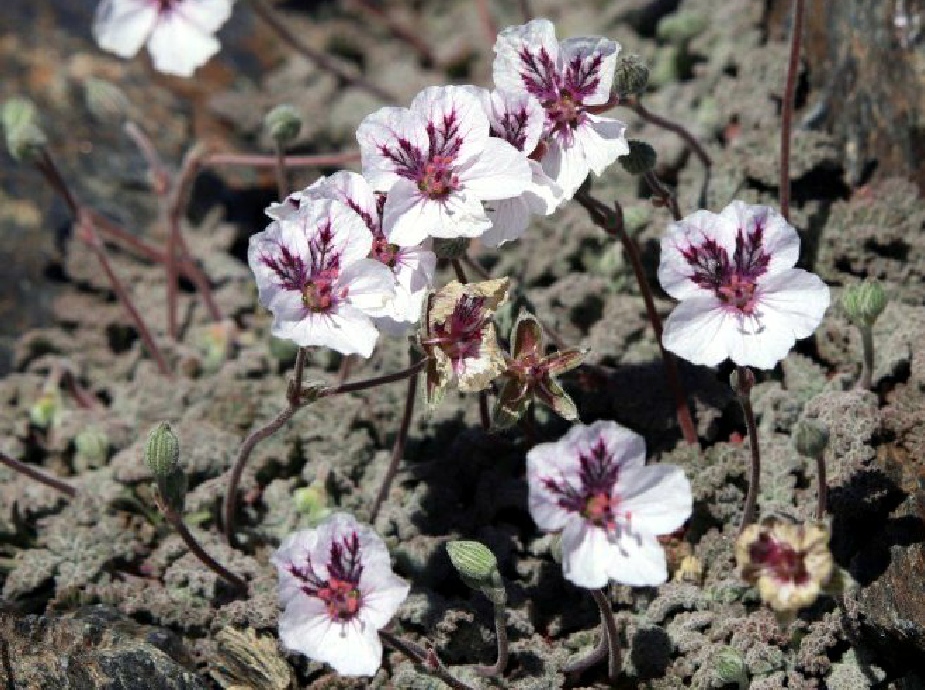
Leaves: lamina 1.3-6 cm x 0.6-1.8cm, ovate to triangular ovate, bi- or tri-pinnatisect, with intercalary leaflets, upper and lower surfaces grey-green, soft-pubescent, with short erect acicular eglandular-hairs, sometimes with some glandular hairs, especially towards the tip of the lobes; principal segments 5-11; tertiary lobes 0.6-1.6 mm wide, usually as long as wide; leaflets bristly-erect, sometimes ± in one plane, lobules obovate to spathulate, rarely lanceolate, ± obtuse, ± fleshy, occasionally reddish; stipules 3.5-7.5 mm, triangular, brownish.
The leaves are often quite red-brownish to purplish in appearance, so they tend to blend in with the rocks and stones they are growing among.
Fruit: fruit 30-45 mm; mericarps 5-6.6 mm, foveole large suborbicular, with stalked glands, outer edge densely ciliate; no furrows. Cotyledons 3-lobed. 2n=20
Distribution: endemic to Spain, in schist or chalky rocks, at 1400-3200m; Sierra Tejeda and Sierra Nevada at Penon de San Francisco, Sierra Subbeticas, Sierra Horconera, Sierra de Cazorla, Sierra de la Neives, Sierra de Rhonda.
Note: There is a population at a place called ‘El Burgo’ in Southern Spain which appears to be different to the usual Erodium cheilanthifolium. The leaves are green, and the flowers, while still blotched are different.
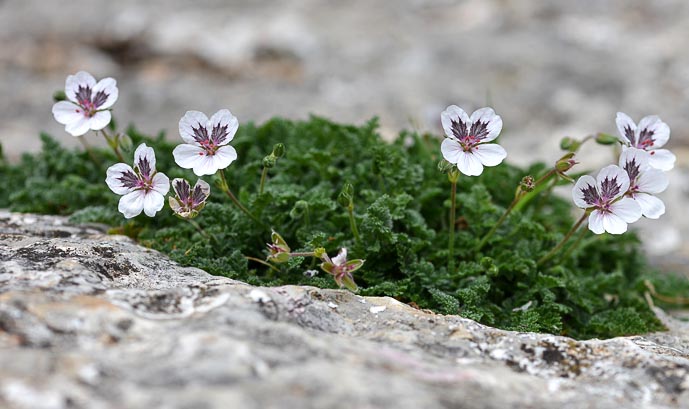
Erodium ‘Stephanie’
A white flowered, blotched Erodium has been in cultivation under the name Erodium ‘guttatum’ for at least 100 years. It clearly is not the species E. guttatum as this has symmetrical black blotched purple-pink flowers and entire leaves. In 1990 this cultivar was renamed Erodium ‘Stephanie’.
